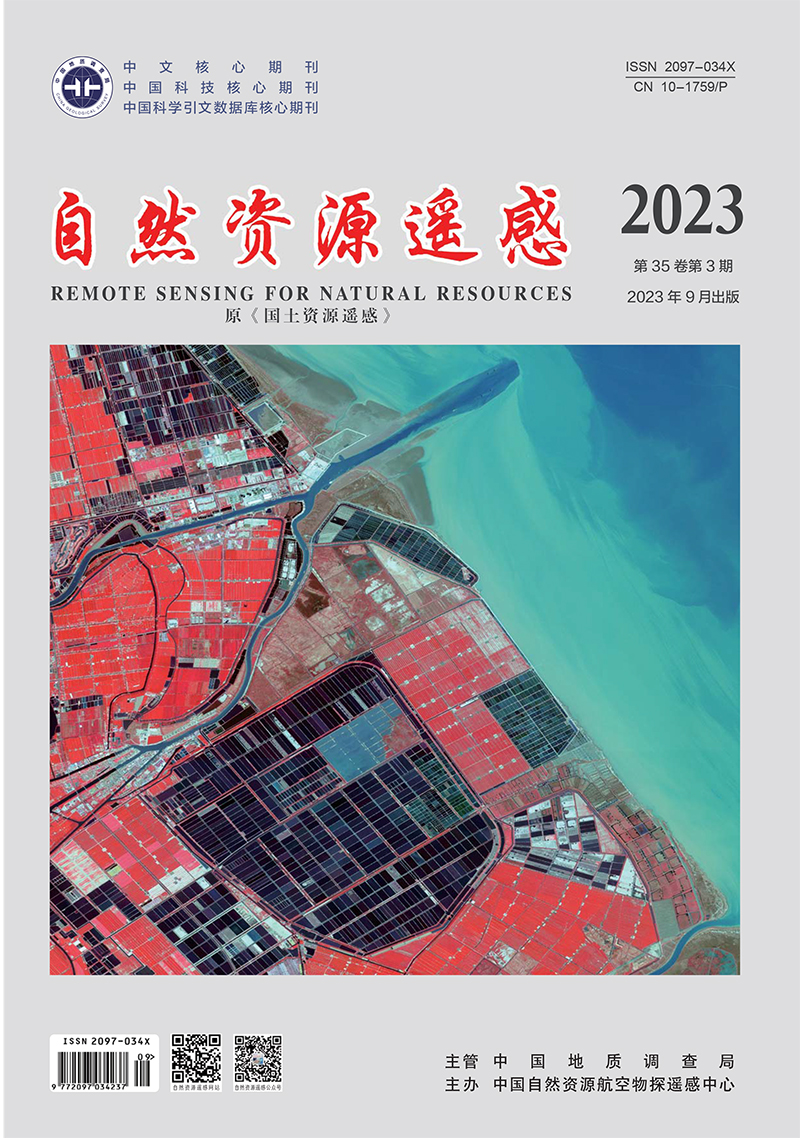YAN Bokun, GAN Fuping, YIN Ping, GE Xiaoli, GUO Yi, BAI Juan. 2023. Remote sensing observations of tidal flats, shorelines, and aquacultural water bodies along coastal zones in China mainland during 1989—2021. Remote Sensing for Natural Resources, 35(3): 53-63. doi: 10.6046/zrzyyg.2022471
| Citation: |
YAN Bokun, GAN Fuping, YIN Ping, GE Xiaoli, GUO Yi, BAI Juan. 2023. Remote sensing observations of tidal flats, shorelines, and aquacultural water bodies along coastal zones in China mainland during 1989—2021. Remote Sensing for Natural Resources, 35(3): 53-63. doi: 10.6046/zrzyyg.2022471
|
Remote sensing observations of tidal flats, shorelines, and aquacultural water bodies along coastal zones in China mainland during 1989—2021
-
YAN Bokun1,2,
-
GAN Fuping 1,2,
-
YIN Ping3,
-
GE Xiaoli1,2,
-
GUO Yi1,2,
-
BAI Juan1,2
-
1. China Aero Geophysical Survey and Remote Sensing Center for Natural Resources, Beijing 100083, China
-
;2. Key Laboratory of Airborne Geophysics and Remote Sensing Geology, Ministry of Natural Resources, Beijing 100083, China
-
;3. Qingdao Institute of Marine Geology, Qingdao 266237, China
-
Abstract
Coastal zones are the world’s most populated areas, with their ecosystems being strongly influenced by human activities. Tidal flats, shorelines, and aquacultural water bodies are critical elements in monitoring the health of coastal zone ecosystems. However, the dynamic changes in the waterlines between land and sea areas caused by tidal effects make it challenging to detect tidal flats and shorelines using the remote sensing technology. By integrating Landsat4/5/7/8 and Sentinel-2A/B satellite remote sensing images, this study conducted seven phases (1989—2021) of monitoring of tidal flats, shorelines, and aquacultural water bodies along coastal zones in China mainland. By taking advantage of the high frequency of multi-source satellite observations, this study identified tidal flats, shorelines, and aquacultural water bodies by detecting the waterlines at different tidal levels. The results are as follows: ① Seawater of different colors requires different combinations of water body indices. For clear or low-turbidity seawater, this study selected the modified normalized difference water index (mNDWI) and the normalized difference water index (NDWI) to detect the waterlines at high and low tidal levels, respectively. This improved the reliability of tidal flat detection, with the detected tidal flat area being 122% larger than that detected only using the mNDWI. For high-turbidity seawater (in Zhejiang, Jiangsu, and Shanghai), this study selected mNDWI to detect the waterlines at high and low tidal levels, avoiding misidentifying high-turbidity seawater as tidal flats using NDWI. Besides, this study selected NDWI to detect aquacultural water bodies. ② During 1989—2021, coastal zones in China mainland changed significantly, as evidenced by rapidly decreased tidal flats and increased aquacultural water bodies and shorelines. The decreased rate of tidal flats and the increased rates of shorelines and aquacultural water bodies along the coastal zones averaged 46.2%, 34.4%, and 149.3%, respectively. Correspondingly, the tidal flat area decreased by 7 173.2 km2, while the the shoreline length and aquacultural water body area increased by 5 320.5 km and 9 046.5 km2, respectively. Provinces or cities in northern China suffered more tidal flat losses than those in southern China. Based on the average decrease rate of tidal flats during 1989—2021, tidal flats in Liaoning, Hebei and Tianjin, and Shandong will disappear within 27 a, 10 a, and 22 a, respectively. ③ The area changes between tidal flats and aquacultural water bodies are highly negatively correlated, indicating that the expansion of aquacultural water bodies is a critical driving factor for the decrease in tidal flats.
-

-
-
Access History







 DownLoad:
DownLoad: